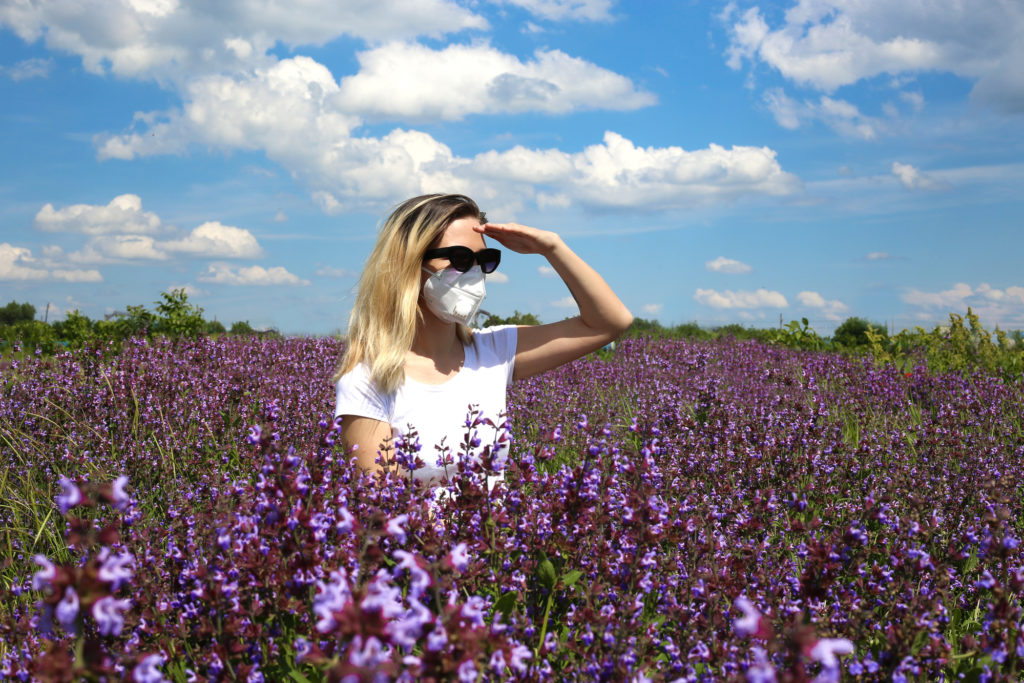
WHY YOU SHOULD READ THIS POST ABOUT REUSABLE COTTON FACE MASKS!
√ Links to 5 reusable cotton face masks you’ll love that will last a long time.
√ Short reminder about why it’s important to wear a mask.
√ Update on how much plastic pollution throwaway masks create.
The coronavirus pandemic isn’t going away any time soon. That probably means you’ll need more and better face masks that won’t create plastic trash and can last you through the end of 2020 and potentially way into 2021. Of the many brands and varieties available, we knew you’d most be on the look-out for reusable cotton face masks that you could wear comfortably and securely and that are plastic-free.
Here are five of the best options we’ve found, plus filters you can get for them. (NOTE: Some products are linked to sites we have affiliate relationships with, so we might earn a few pennies if you make a purchase. Thanks!)
USA Reusable Cotton Face Masks – 100% Cotton with Filter Pocket, Ear Loops and Nose Wire Bridge for closer fit. Made in the USA. (I haven’t tried this one, but it got lots of 5 star ratings on Amazon!)
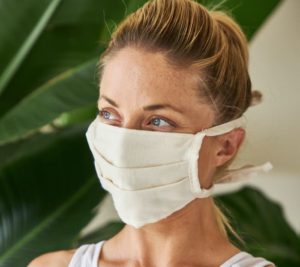
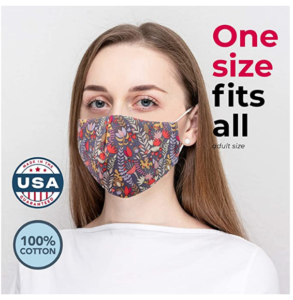
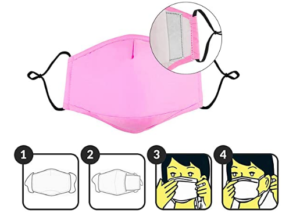
.
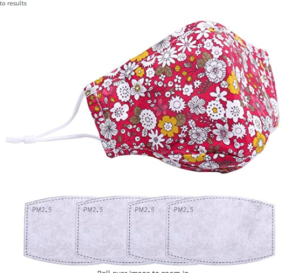
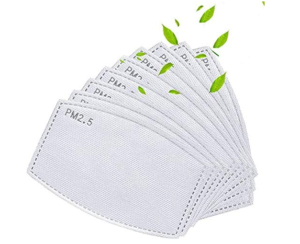
By the way, if you don’t have a “professional” filter, you can make one out of a coffee filter.
Here’s a short refresher course from the Centers for Disease Control (CDC) on why face masks are essential.
Centers for Disease Control: Wear a Mask!
COVID-19 spreads mainly from person to person through respiratory droplets produced when an infected person coughs, sneezes, or talks. These droplets can land in the mouths or noses of people who are nearby or possibly be inhaled into the lungs. Studies and evidence on infection control report that these droplets usually travel around 6 feet (about two arms lengths). So, stay 6 feet away from anyone who you are not certain is not infected. (If you’ve quarantined with someone for two weeks and neither of you has gotten sick, you’re probably fine. If you’re getting together with friends or family to hang out, you should all wear masks and still stay 6 feet apart.)
Also, wear cloth face coverings in public settings where other social distancing measures are difficult to maintain, such as grocery stores, pharmacies, and gas stations.
This is another important point: Cloth face coverings may slow the spread of the virus by people who may have it but not know it. If you have it but don’t have any symptoms, you could still spread it just by talking, coughing, sneezing, and even singing. Wear a face mask to keep your viral germs to yourself!
NOTE: The CDC says that children younger than 2 or anyone who has trouble breathing or is incapacitated should not wear a mask.
I personally expect to wear a face mask for years to come. In addition to protecting against COVID-19, my mask could also help protect me from the flu and the common cold. I never wore a mask before, but from here on out, I’m going to wear it all the time when I’m out shopping, on the subway or bus, or at a public event.
Single-Use Throwaway Masks Pollute the Seas and Could Kill Wildlife. Plus, They Create Ugly Litter.
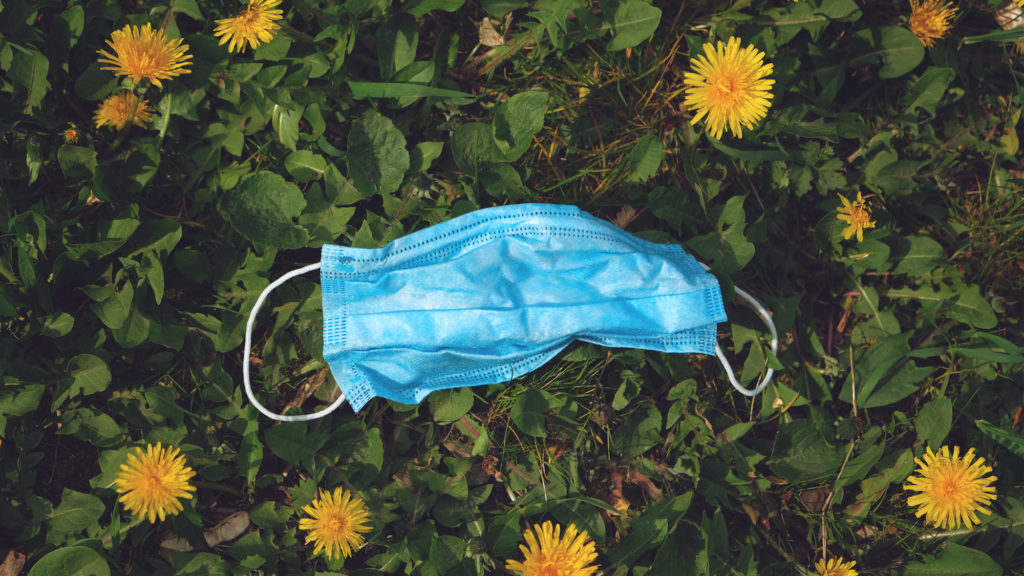
Throwaway plastic-based masks, along with single-use plastic gloves and wipes, are quickly becoming a significant source of pollution. Environmental group OceansAsia’s recent survey of the waters around HongKong found dozens of masks washed up on shore and floating in the water.*
Opération Mer Propre (clean seas), a French nonprofit, worries that there may soon be more masks than jellyfish in the Mediterranean.* Even in my neighborhood outside Washington, D.C., every day I find throwaway masks on the ground, where they can get washed into the storm drain and end up in the Chesapeake Bay and, eventually, the Atlantic Ocean.
Most single-use masks are made from polypropylene, a plastic that does not break down. It’s already estimated that over eight million tons of plastic enter our oceans. Some of that breaks down into micro plastic. Animals eat some of it, dying in the process.
Some people are adding to the problem by just tossing their mask out the window or to the ground, where it becomes ugly litter that no one wants to pick up.
Reusable face masks last many times over. And even if they’re thrown out as litter, cotton masks will biodegrade into harmless fibers.
What To Look For In a Reusable Cotton Face Mask
There are many masks on the market. CDC recommends we wear cloth masks like the ones featured in this post to help prevent all of us from spreading the disease.
CDC does NOT recommend an “N-95” mask regularly. N-95s are what doctors and first-line responders need to protect themselves when they help people who are sick with COVID-19. Some of us with compromised immune systems and respiratory diseases might need them, too. Or if you’re getting on an airplane or otherwise will be in an enclosed space in close proximity to other people, an N-95 could be your best option, because the N-95 prevents almost all particles from coming through your mask, where you might inhale them.
However, on the whole, the CDC says if we all wear tight-fitting, multi-layered cloth masks, we’ll go a long way to protecting ourselves and each other. Here’s me in one of my masks!
♥Reusable Cloth – You might be able to wear a paper mask a few times, but ultimately, it will end up in the trash. Get a cloth mask you can wash and reuse frequently.
♥Two Layers of Fabric – Choose (or make) a mask that has at least two separate layers of cloth. When you hold your mask up to the light, the cloth needs to be woven so tightly that you can’t see through it.
♥Filter Pocket – In addition to two layers of fabric, you’ll get extra protection from having a filter between the layers. Before I had an actual mask, I rolled up a cotton bandana and put a folded coffee filter between the layers. That worked really well and provided extra protection! The mask I now use most often has a pocket in the middle that I can slip a filter into. I have bought some charcoal filters that will trap really very tiny particles.
NOTE: You may have heard about using a vacuum HEPA filter for your face mask. Make sure the filter is NOT made of fiberglass, as minuscule particles of glass may break off and be accidentally inhaled. A coffee filter folded in half adds more protection. This Merv 13 Material is not fiberglass and is designed to stop tiny airborne particles, increasing your masks’ effectiveness.
♥Proper Fit – The mask should cover both your nose and your mouth snugly without slipping down. It should either have ear loops to hold it on properly, or two sets of ties, one to tie the top sides of the mask around the back of your head, and one set to tie the bottom sides. It should extend an inch or so beyond your nose and mouth and fit snugly under your chin. I got one mask that looked pretty nice but kept slipping down off my nose. That forced me to keep adjusting it, which wasn’t particularly safe. I had to stop using it. I personally prefer the adjustable ear loops because I can tighten them around my face better.
♥Enough Masks – I have three masks I rotate among: one to wash, one to wear, and one as a back-up. Some moms had told me that they have gotten seven masks for their kids, one for every day of the week. You decide how much you need.
We are not recommending masks made from recycled plastic because plastic-based fabric can shed micro-plastic when it wears out or is washed. There are so many cotton masks to choose from, there’s no need to use recycled plastic fabric.
If you want to make your own mask, here are some sew and no-sew DIY instructions.
How to Wear Your Reusable Cotton Face Mask Correctly
- Wash your hands before putting on your mask
- Put it over your nose and mouth and secure it under your chin
- Try to fit it snugly against the sides of your face; use adjustable ear loops to pull the mask tight.
- Make sure you can breathe easily
And to reiterate, make sure your mask covers your nose as well as your mouth for the max protection the mask offers.
**SOURCES**
Coronavirus face masks ‘could have a devastating effect on the environment’
More masks than jellyfish in the sea!


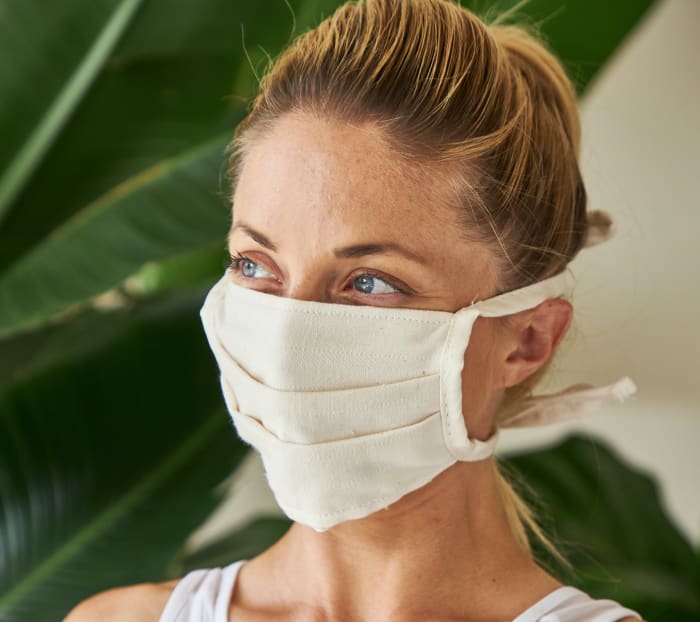
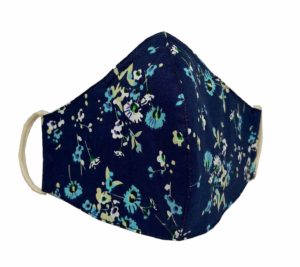
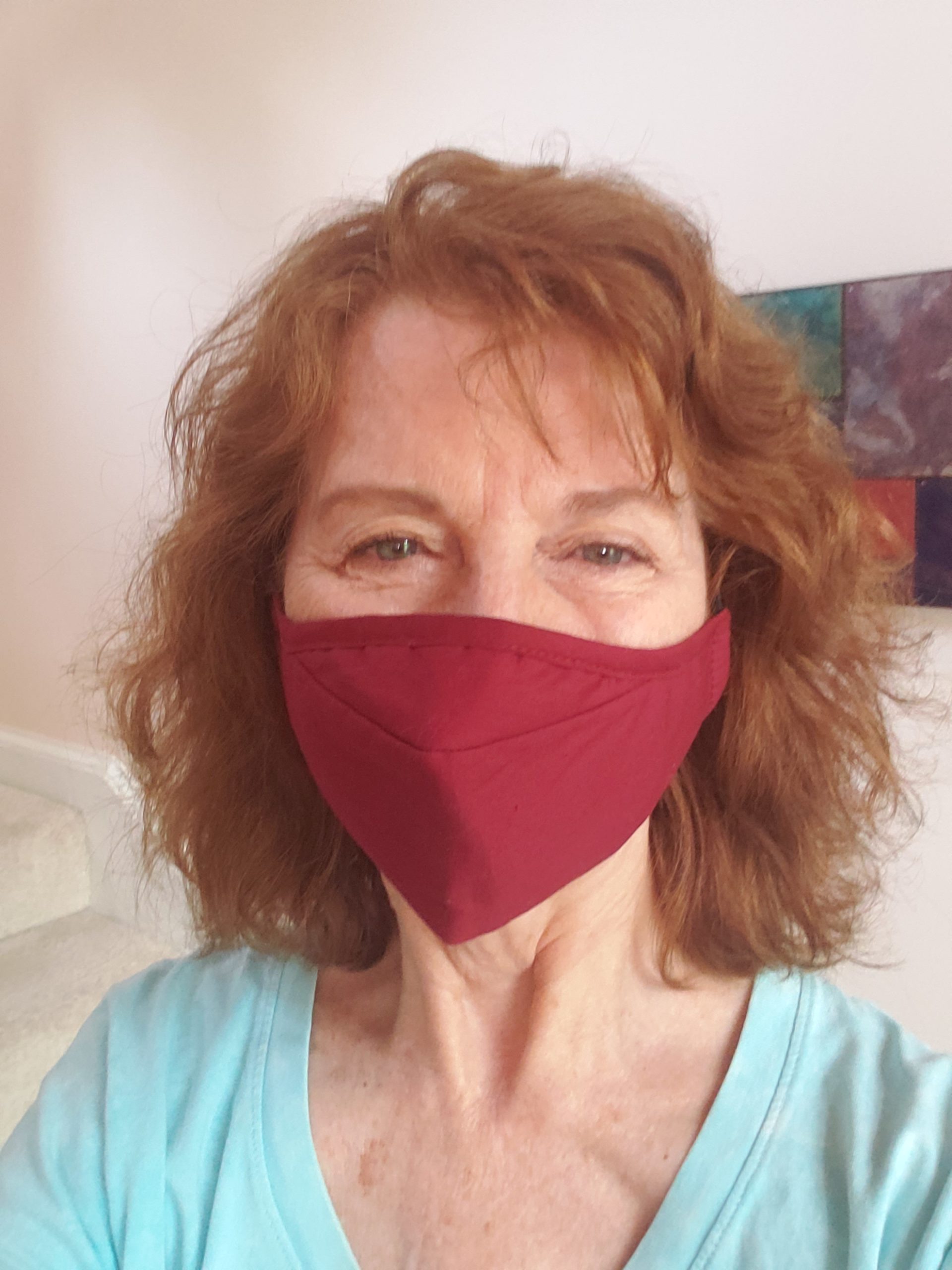

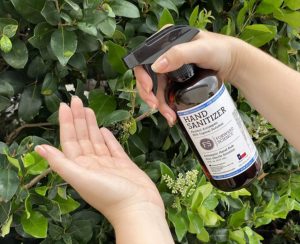
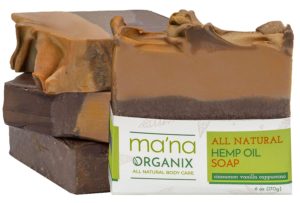
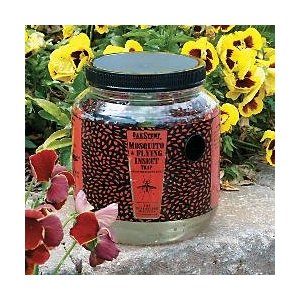

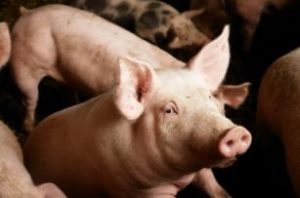








4 thoughts on “5 Plastic-Free Reusable Cotton Face Masks To Outlast Coronavirus”
Worthwhile post! Also using a handmade mask gives the opportunity to stand out of the crowd.
Yes it does!
Thanks very worthwhile information. Organic face masks are made with 100% GOTS Certified Organic Cotton. The high quality you expect, with the Comfort, longevity and Protection you Deserve. Never Touch the front of your mask during use, just as you would avoid touching your face. If you need to reposition your mask while wearing it, use the rear straps to maneuver it rather than touching the face of the mask.
Thanks for the tips!
Comments are closed.